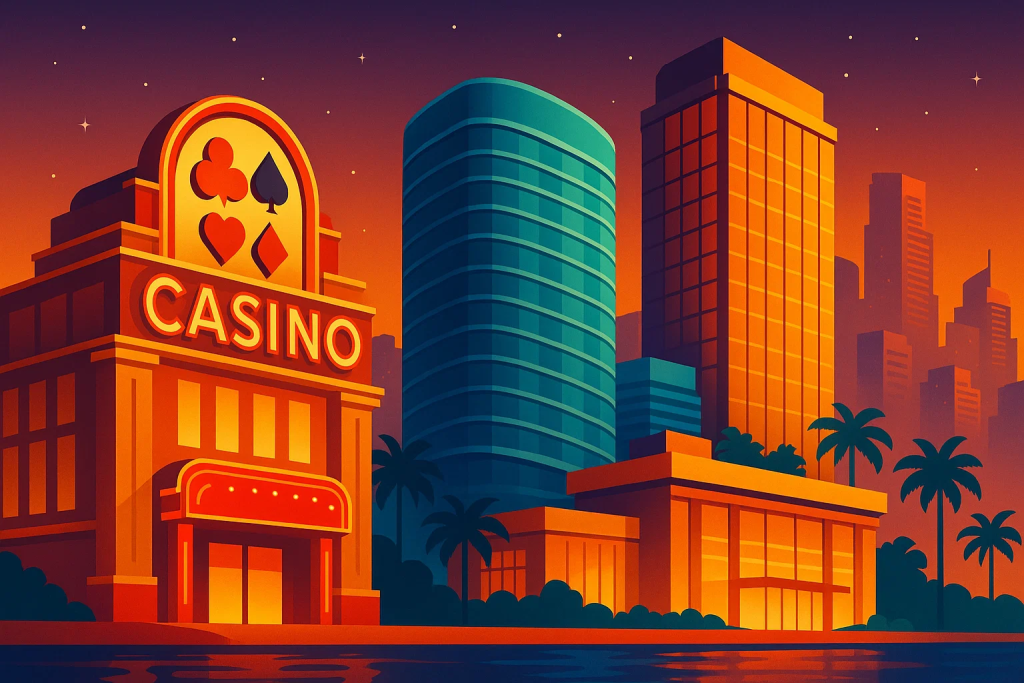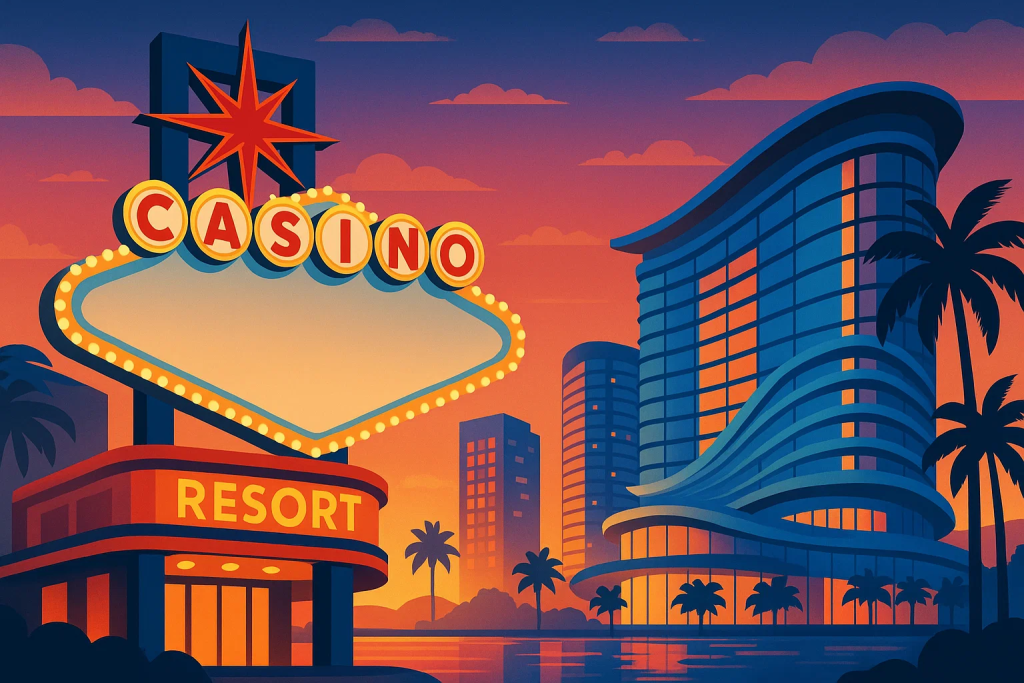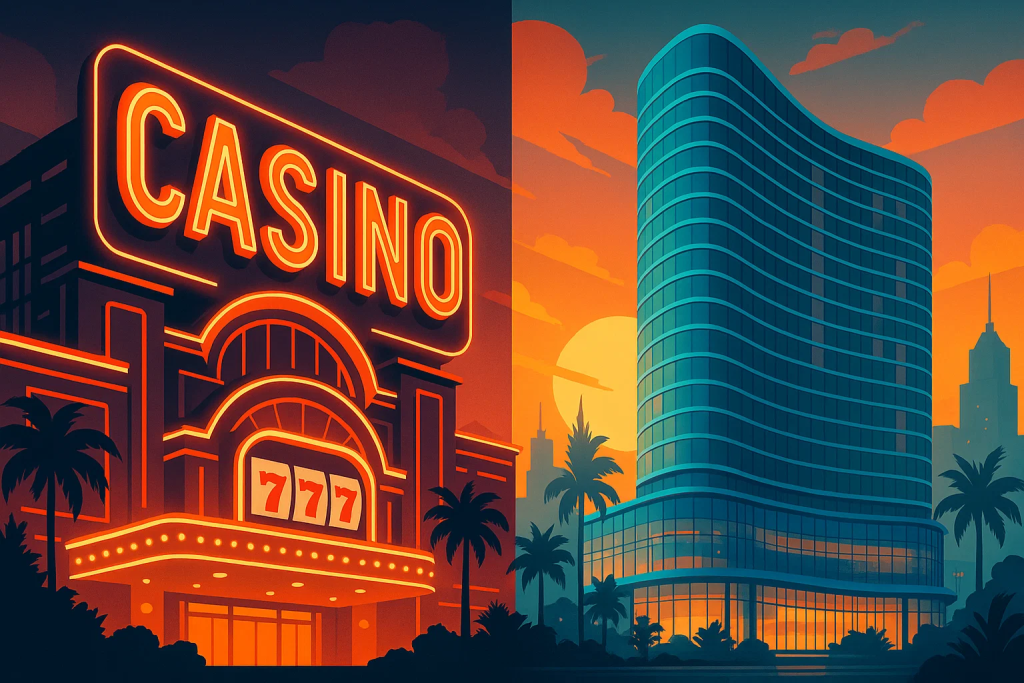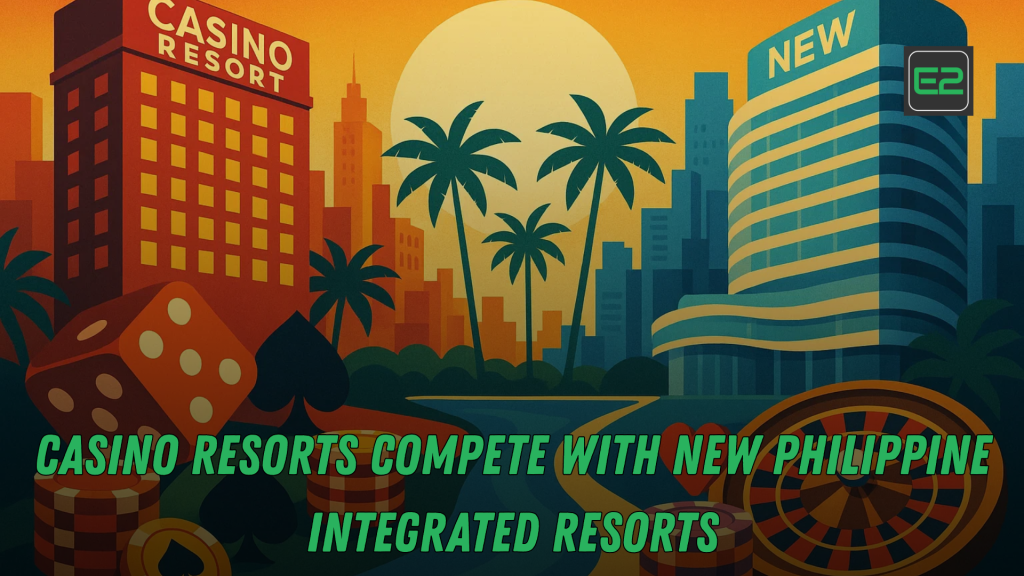Table of Contents
The Philippine casino industry is experiencing a dynamic transformation, thanks to the emergence of Philippine Integrated Resorts (IRs). These massive, multifaceted establishments combine world-class gaming experiences with luxurious accommodations, top-notch entertainment, fine dining, and retail offerings, making them a focal point for both local and international tourists. The intense competition between traditional casino resorts and these new integrated resorts is reshaping the landscape of Philippine tourism and gaming.

This article will explore the rise of Philippine Integrated Resorts, how they are changing the casino resort scene in the country, and what this means for industry stakeholders and visitors alike. Additionally, we will take a closer look at the facilities, services, and offerings that differentiate the new integrated resorts from traditional casino resorts, as well as the economic and social implications of this new development.
The Rise of Philippine Integrated Resorts
What Are Philippine Integrated Resorts?
A Philippine Integrated Resort (IR) is a large-scale development that combines several leisure and entertainment elements, including:
- Casino gaming facilities for gambling enthusiasts
- Luxury hotels and resorts offering world-class accommodations
- Fine dining experiences with top-tier restaurants and international cuisine
- Retail shopping malls featuring both luxury and everyday brands
- Entertainment options such as live performances, clubs, and cultural shows
These IRs are designed to be self-contained ecosystems that provide visitors with a comprehensive experience all in one location. The concept draws inspiration from successful integrated resorts in places like Singapore (Marina Bay Sands) and Macau (The Venetian), which have proven to be highly effective in attracting both tourists and high rollers.
The Development of Integrated Resorts in the Philippines
The rise of Philippine Integrated Resorts began in the late 2000s, when the Philippine government recognized the potential of the gaming industry as a major driver of tourism and economic growth. This led to the creation of several large-scale developments, most notably in the entertainment hub of Parañaque City, which includes integrated resorts such as Okada Manila, Solaire Resort & Casino, and City of Dreams Manila.
The launch of these developments was strategically planned to boost the country’s tourism sector while creating job opportunities and stimulating economic activity. With the success of these initial integrated resorts, other developers and investors quickly followed suit, building new projects that pushed the boundaries of luxury, entertainment, and innovation.
Competition Between Casino Resorts and Integrated Resorts
Traditional Casino Resorts in the Philippines
For many years, traditional casino resorts in the Philippines were the dominant force in the gaming and hospitality sector. These resorts, while successful in providing gambling experiences, typically offered fewer amenities compared to the new integrated resorts. While they offered luxury accommodations and a variety of gaming options, they were often more limited in terms of entertainment, shopping, and dining experiences.
However, with the introduction of Philippine Integrated Resorts, traditional casino resorts are facing increased competition. Integrated resorts provide a holistic and immersive experience that attracts a broader range of visitors, from high rollers to casual tourists. The diverse offerings of entertainment, dining, shopping, and wellness facilities make integrated resorts far more appealing for those looking for a full-fledged vacation.
Advantages of Philippine Integrated Resorts
- Diverse Offerings: Unlike traditional casino resorts, Philippine Integrated Resorts combine multiple sectors under one roof. Visitors can enjoy not just gaming, but also live performances, art exhibits, luxury shopping, and high-end dining. This gives the resorts the ability to appeal to a wide range of tastes and interests, attracting families, couples, business travelers, and solo tourists alike.
- Global Appeal: Philippine Integrated Resorts have the ability to cater to both international visitors and local tourists, making them key drivers of the country’s global tourism push. These resorts are designed to compete on the same level as renowned international destinations, such as those in Las Vegas and Macau, positioning the Philippines as a major player on the global tourism map.
- Job Creation and Economic Impact: The development of integrated resorts has led to the creation of thousands of jobs, from hotel staff and casino dealers to retail workers and entertainers. These resorts have become pillars of their local economies, drawing significant foreign investment and generating tax revenues for the government.
Key Players in the Philippine Integrated Resort Market
Okada Manila
Okada Manila, one of the flagship Philippine Integrated Resorts, is a prime example of what these resorts can offer. With a massive casino floor, a luxury hotel, over 20 dining outlets, retail shops, and entertainment options such as a water fountain and nightclubs, Okada Manila has become a dominant force in the country’s hospitality sector. Its sprawling complex attracts high rollers and casual visitors alike, offering everything from world-class gambling to casual family entertainment.
Solaire Resort & Casino
Solaire Resort & Casino, another key player in the integrated resort space, is known for its upscale amenities and elegant design. Located in Parañaque’s Entertainment City, Solaire offers a state-of-the-art casino, an array of dining experiences, and a resort with spacious rooms and suites. Solaire also boasts high-end shops, performance venues, and exclusive spas, which contribute to its reputation as a leading destination for both local and international travelers.
City of Dreams Manila
City of Dreams Manila is a sprawling entertainment complex that encompasses multiple hotels, a large casino, and a selection of dining and retail outlets. The resort is home to Nobu Hotel, Hyatt City of Dreams Manila, and Crown Towers Manila, each offering unique luxury experiences for visitors. It also hosts the DreamPlay entertainment center, which offers family-friendly activities that set it apart from other resorts in the region.
How Philippine Integrated Resorts Are Shaping the Future of Tourism
Attracting International Tourists
One of the key goals behind the development of Philippine Integrated Resorts was to attract international tourists to the Philippines. By offering world-class facilities and creating immersive gaming and entertainment experiences, these resorts have become a major draw for tourists from all over the globe.
The presence of internationally recognized hotel brands like Nobu and Hyatt has further bolstered the Philippines’ reputation as a luxury destination. These resorts are positioning the country as a viable alternative to more established destinations like Macau and Singapore, providing a unique and culturally rich experience for international visitors.
Casino-Grade Amazing Tournaments: Baccarat & Blackjack Events
Impact on Local Communities
The rise of Philippine Integrated Resorts has had a profound impact on local communities, particularly in regions such as Parañaque and the surrounding areas. These resorts have created thousands of jobs in hospitality, entertainment, and retail, benefiting both skilled workers and those employed in entry-level positions.
Moreover, the integrated resorts contribute to the local economy through taxes and tourism-related spending, creating a ripple effect that boosts other sectors, such as transportation and food production. The presence of international tourists also helps local businesses, from restaurants and cafes to souvenir shops, thrive.

What Makes Philippine Integrated Resorts Stand Out?
Luxurious Accommodations and Amenities
One of the biggest draws of Philippine Integrated Resorts is their world-class accommodations. Guests can enjoy spacious, well-appointed rooms and suites with stunning views of the surrounding city or ocean. Many of the resorts feature state-of-the-art spas, fitness centers, and private lounges, ensuring a luxurious experience from check-in to check-out.
Entertainment for All
Philippine Integrated Resorts are designed to cater to visitors with varied interests. For casino enthusiasts, these resorts offer vast gaming floors with slot machines, table games, and poker rooms. For families, entertainment options such as kid-friendly zones, movie theaters, and theme parks offer a day full of fun. For those looking for more exclusive experiences, fine-dining restaurants, retail outlets, and live performances ensure that there’s always something to do.
Sustainable Development
In recent years, many Philippine Integrated Resorts have embraced sustainability, incorporating eco-friendly technologies and practices. These include energy-efficient systems, waste-recycling programs, and water conservation initiatives. By promoting sustainable tourism, these resorts are setting an example for other developments in the country and beyond.
What’s Next for Philippine Integrated Resorts?
The growth of Philippine Integrated Resorts shows no signs of slowing down. With new projects on the horizon and the Philippine government’s ongoing support of the gaming industry, these resorts are expected to continue shaping the future of tourism in the country. The success of these developments also opens the door for other regions of the Philippines to explore their potential as hosts for integrated resorts, further spreading the economic and social benefits across the country.

FAQs About Philippine Integrated Resorts
1. What makes Philippine Integrated Resorts different from traditional casinos?
Philippine Integrated Resorts offer more than just a gaming experience. They combine luxury accommodations, entertainment options, dining, and shopping under one roof, creating a full-fledged destination for tourists.
2. How do Philippine Integrated Resorts contribute to the economy?
These resorts generate significant revenue through gaming, tourism, and retail, creating jobs and boosting local businesses. They also contribute to government tax revenues and help promote the Philippines as a global tourist destination.
3. Are Philippine Integrated Resorts only for high rollers?
While they cater to high rollers, Philippine Integrated Resorts are designed to be accessible to a wide range of visitors. Many resorts offer non-gaming amenities like family-friendly attractions, dining, and shopping, making them suitable for all types of tourists.
4. How do Philippine Integrated Resorts compare to other gaming destinations like Macau and Singapore?
Philippine Integrated Resorts are positioning the Philippines as a competitive alternative to well-established gaming hubs. With unique local attractions, luxury accommodations, and diverse offerings, they are making the country an appealing choice for international tourists.
5. How can I visit Philippine Integrated Resorts?
You can visit Philippine Integrated Resorts by booking a stay directly with the resort or through travel agencies. Many resorts also offer day passes for non-staying guests to access gaming floors, restaurants, and entertainment.
